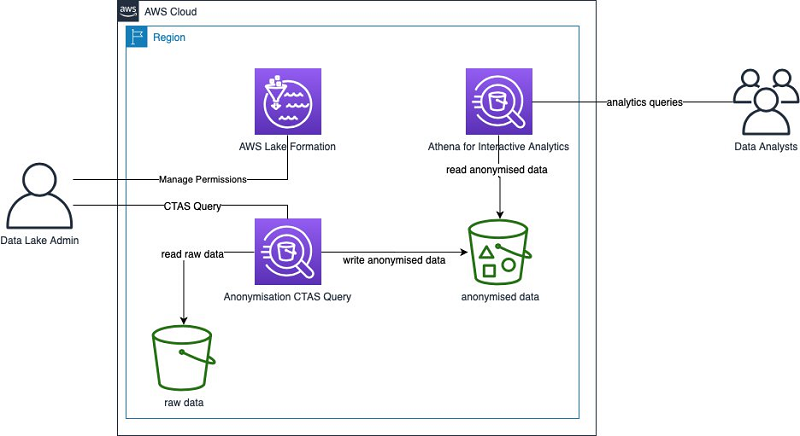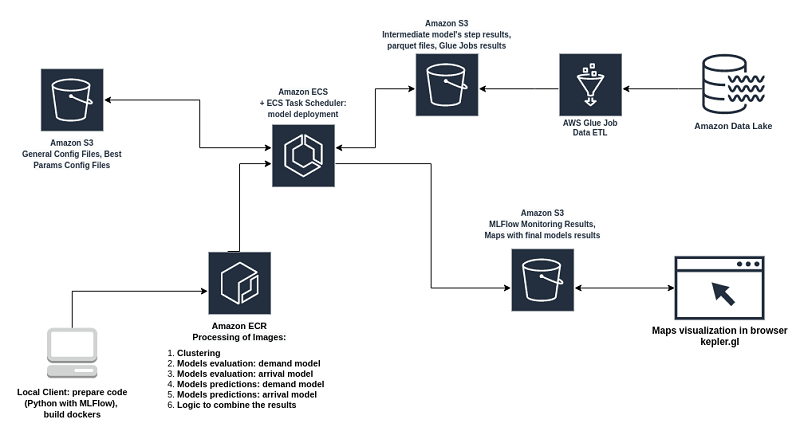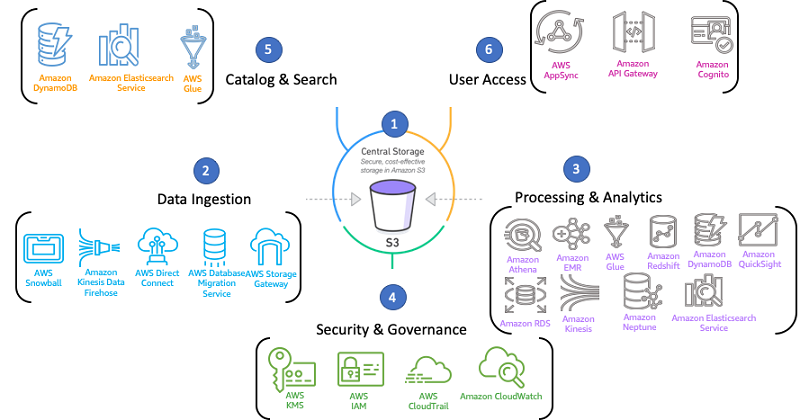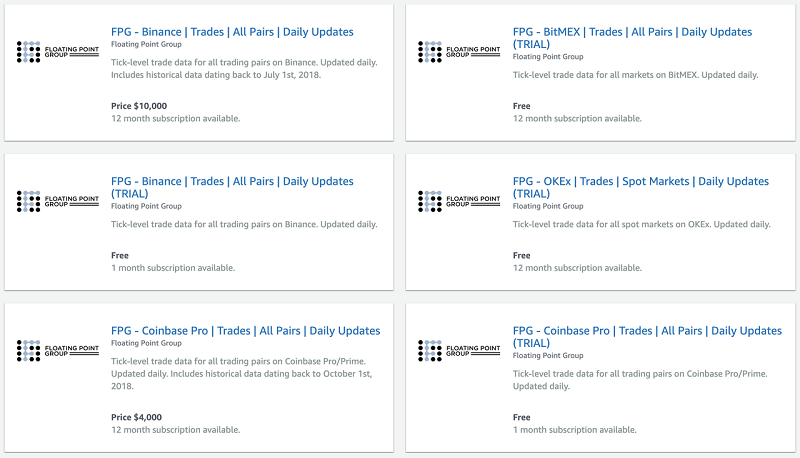AWS Big Data Blog
Tag: Amazon S3
How to delete user data in an AWS data lake
General Data Protection Regulation (GDPR) is an important aspect of today’s technology world, and processing data in compliance with GDPR is a necessity for those who implement solutions within the AWS public cloud. One article of GDPR is the “right to erasure” or “right to be forgotten” which may require you to implement a solution […]
Anonymize and manage data in your data lake with Amazon Athena and AWS Lake Formation
Most organizations have to comply with regulations when dealing with their customer data. For that reason, datasets that contain personally identifiable information (PII) is often anonymized. A common example of PII can be tables and columns that contain personal information about an individual (such as first name and last name) or tables with columns that, if joined with another table, can trace back to an individual. You can use AWS Analytics services to anonymize your datasets. In this post, I describe how to use Amazon Athena to anonymize a dataset. You can then use AWS Lake Formation to provide the right access to the right personas.
How Wind Mobility built a serverless data architecture
We parse through millions of scooter and user events generated daily (over 300 events per second) to extract actionable insight. We selected AWS Glue to perform this task. Our primary ETL job reads the newly added raw event data from Amazon S3, processes it using Apache Spark, and writes the results to our Amazon Redshift data warehouse. AWS Glue plays a critical role in our ability to scale on demand. After careful evaluation and testing, we concluded that AWS Glue ETL jobs meet all our needs and free us from procuring and managing infrastructure.
Extend your Amazon Redshift Data Warehouse to your Data Lake
Amazon Redshift is a fast, fully managed, cloud-native data warehouse that makes it simple and cost-effective to analyze all your data using standard SQL and your existing business intelligence tools. Many companies today are using Amazon Redshift to analyze data and perform various transformations on the data. However, as data continues to grow and become […]
Running a high-performance SAS Grid Manager cluster on AWS with Amazon FSx for Lustre
SAS® is a software provider of data science and analytics used by enterprises and government organizations. SAS Grid is a highly available, fast processing analytics platform that offers centralized management that balances workloads across different compute nodes. This application suite is capable of data management, visual analytics, governance and security, forecasting and text mining, statistical […]
Build an AWS Well-Architected environment with the Analytics Lens
Building a modern data platform on AWS enables you to collect data of all types, store it in a central, secure repository, and analyze it with purpose-built tools. Yet you may be unsure of how to get started and the impact of certain design decisions. To address the need to provide advice tailored to specific technology and application domains, AWS added the concept of well-architected lenses 2017. AWS now is happy to announce the Analytics Lens for the AWS Well-Architected Framework. This post provides an introduction of its purpose, topics covered, common scenarios, and services included.
Simplify data pipelines with AWS Glue automatic code generation and Workflows
In this post, we discuss how to leverage the automatic code generation process in AWS Glue ETL to simplify common data manipulation tasks, such as data type conversion and flattening complex structures. We also explore using AWS Glue Workflows to build and orchestrate data pipelines of varying complexity. Lastly, we look at how you can leverage the power of SQL, with the use of AWS Glue ETL and Glue Data Catalog, to query and transform your data.
How Siemens built a fully managed scheduling mechanism for updates on Amazon S3 data lakes
Siemens is a global technology leader with more than 370,000 employees and 170 years of experience. To protect Siemens from cybercrime, the Siemens Cyber Defense Center (CDC) continuously monitors Siemens’ networks and assets. To handle the resulting enormous data load, the CDC built a next-generation threat detection and analysis platform called ARGOS. ARGOS is a […]
Analyze your Amazon S3 spend using AWS Glue and Amazon Redshift
The AWS Cost & Usage Report (CUR) tracks your AWS usage and provides estimated charges associated with that usage. You can configure this report to present the data at hourly or daily intervals, and it is updated at least one time per day until it is finalized at the end of the billing period. The […]
Collect and distribute high-resolution crypto market data with ECS, S3, Athena, Lambda, and AWS Data Exchange
This is a guest post by Floating Point Group. In their own words, “Floating Point Group is on a mission to bring institutional-grade trading services to the world of cryptocurrency.” The need and demand for financial infrastructure designed specifically for trading digital assets may not be obvious. There’s a rather pervasive narrative that these coins […]









